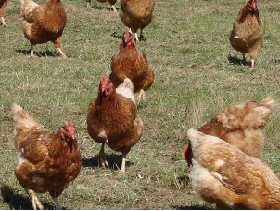



Welfare Costs Put Australian Poultry Farmers under Pressure
AUSTRALIA - The country's chicken producers say they are struggling to meet rising cost of new animal welfare standards, while new rules for free-range hens and last year's avian flu outbreak are making it hard for farmers to meet demand.Broiler Farmers Struggle with Rising Welfare Costs
Queensland growers are currently negotiating the increased costs with chicken meat processors who sell to the retailers.
Chicken meat producers say they are struggling to meet the cost of new animal welfare standards as the expense is not being passed on to consumers, reports 7 News.
Supermarket giant Coles has introduced an RSPCA-accredited production system, with retail rival Woolworths set to follow.
The president of the Queensland Chicken Growers Association, Jodie Redcliffe, says animal welfare was already a high priority for farmers.
She said: "In general, Australia is a very heavily regulated country and if we continue to put higher standards on things then someone has to pay. I hope the message gets out to consumers that it is worth something."
The issue has been discussed among producers at a poultry conference this week on the Gold Coast.
To comply with the RSPCA's accreditation system, growers are installing perches, improving lighting where necessary and providing enrichment items including toys and balls.
Ms Redcliffe says her property will meet the accreditation standards in the next few months.
"Our chickens are inside raised so they run around on sawdust, eat and drink and feed and peck and perch," she said.
Queensland growers are currently negotiating the increased costs with chicken meat processors who sell to the retailers.
"We already have a high welfare system and that will improve with the RSPCA accreditation but what we're concerned about is that consumers understand that a higher welfare system should be costing more in the supermarket," she told 7 News.
Avian Flu in 2013 and Free-range Standards Hit Egg Sector

Egg farmers in Australia are at a crossroads, reports ABC Rural.
They have collectively spent A$500 million changing their sheds and cages to meet the new model code of practice up till 2008 but increasing demand for free range has made the code out of date.
At a poultry conference on the Gold Coast this week, they have been asking 'What next and what cost?'
The destruction of 500,000 birds struck by avian influenza last October, at Young in New South Wales, brought about an egg shortage. That one farm produced 4.5 per cent of the nation's eggs, and half were free-range.
Concern over diseases on free-range farms has slowed up the transition from caged hens, despite the increasing demand.
Free-range has lifted from eight per cent market share in 2001 to 38 per cent in 2012, according to ABC Rural.
Bede Burke, the chair of the NSW Farmers Egg Committee, says the outdoor range standard is 1,500 hens per hectare but they can be stocked tighter if the hens are rotated to different paddocks.
He explained: "The free range range definition is really vague and the discretion is left up to the producer. What we have seen is our supermarket duopoly come in and say they want it capped to 10,000 birds per hectare, which is the same as two birds on the average kitchen table, of one metre by two metres.
"There are some small bird farms with very low stocking densities, and they're not the ones who can fill the supermarket shelves."
Mr Burke says the industry was working towards a free-range standard but it hit a brick wall with state governments.
"We need to work with both federal and state governments to get it going again," he told ABC Rural.
Australians now eat 214 eggs each a year, up from 150 eggs 10 years ago.








